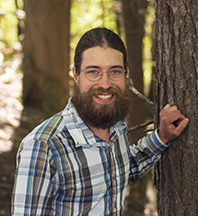Week of October 31 – November 6, 2021
by David DuBois, Land Steward
It’s nearly the end of acorn season, when the mighty oaks of the eastern forest give up their precious acorns to make a feast for jays, squirrels, birds, and mammals. These nuts help sustain the animals through a long winter until the reemergence of spring. Hidden inside each one of these acorns is the makings of a new oak and the continuation of the forest.
Our Central New York oaks come in two forms whose acorns act very differently. The red oaks (like Northern Red Oak and Black Oak) have very bitter acorns loaded with tannins. These acorns wait their first winter fully dormant before sending out a root and a pair of leaves in spring. The white oaks (like White Oak, and Bur Oak), on the other hand, have acorns that are sweet, with less tannins, and spend no time delaying their germination. Many white oak acorns fall out of the tree with a root tip starting to poke out of the nut, not even waiting to reach the ground before starting their root. These oaks tend to be the preferred fall food for animals because the lower levels of tannin make them a ready-made treat.
At Baltimore Woods we only have a few oak trees that are old enough to produce acorns. The oaks that surely existed in some of our forests historically have all been cleared to make way for agricultural land and their valuable lumber. Because it can take over 20 years before an oak is large enough to produce acorns the restoration of these important forest trees on the property will be a slow long process but one that is worth embarking on. Soon oaks may return to their spot as the bountiful producers of our forest.
As the saying goes the best time to plant a tree is 30 years ago. The second best time is today.


